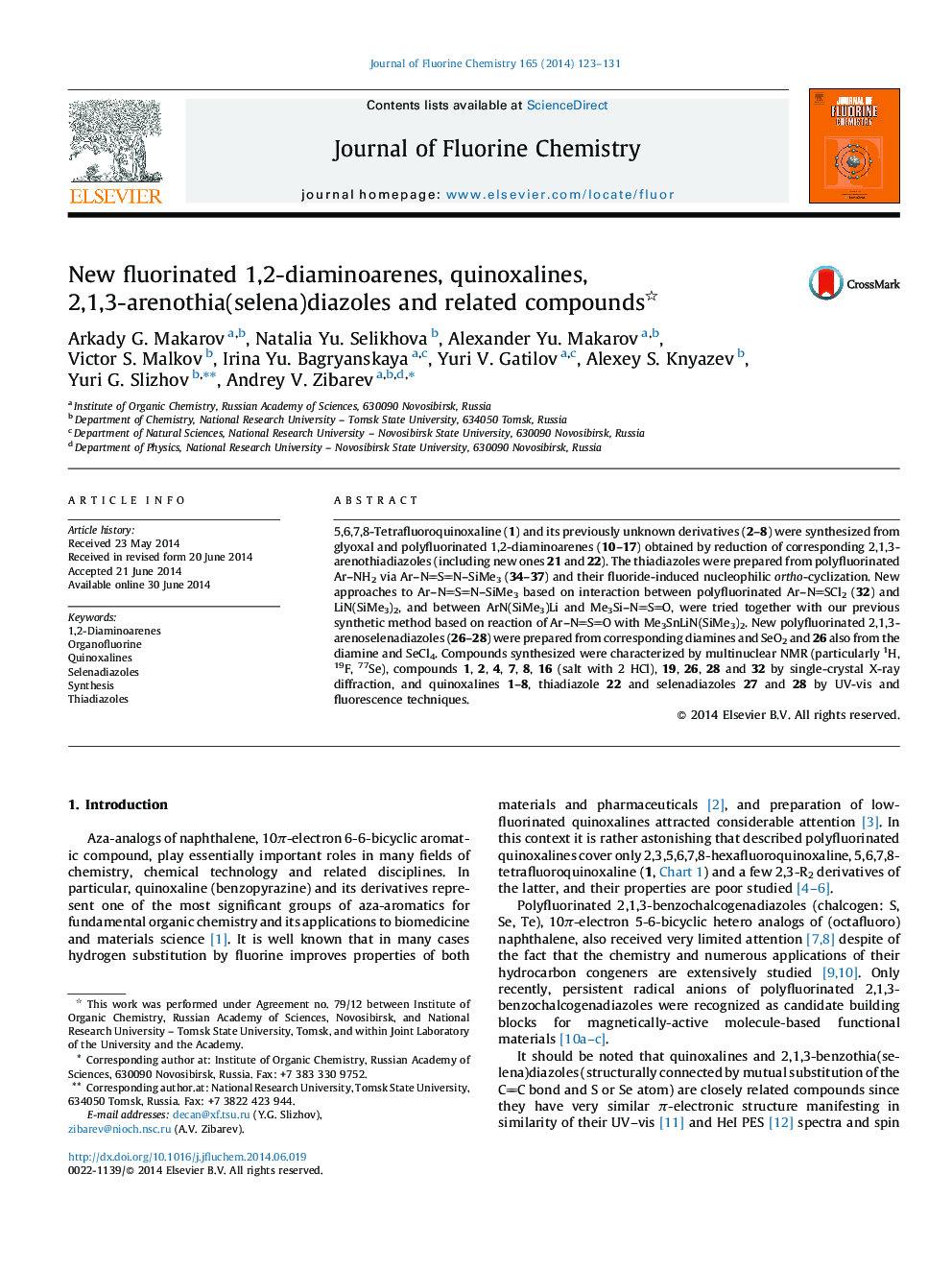| Article ID | Journal | Published Year | Pages | File Type |
|---|---|---|---|---|
| 1313988 | Journal of Fluorine Chemistry | 2014 | 9 Pages |
•Unified approach was designed and used for synthesis of the title compounds.•In all cases starting materials were fluorinated anilines.•New fluorinated 1,2-diaminoarenes, quinoxalines and 2,1,3-arenothia(selena)diazoles were characterized by X-ray diffraction.
5,6,7,8-Tetrafluoroquinoxaline (1) and its previously unknown derivatives (2–8) were synthesized from glyoxal and polyfluorinated 1,2-diaminoarenes (10–17) obtained by reduction of corresponding 2,1,3-arenothiadiazoles (including new ones 21 and 22). The thiadiazoles were prepared from polyfluorinated ArNH2 via ArNSNSiMe3 (34–37) and their fluoride-induced nucleophilic ortho-cyclization. New approaches to ArNSNSiMe3 based on interaction between polyfluorinated ArNSCl2 (32) and LiN(SiMe3)2, and between ArN(SiMe3)Li and Me3SiNSO, were tried together with our previous synthetic method based on reaction of ArNSO with Me3SnLiN(SiMe3)2. New polyfluorinated 2,1,3-arenoselenadiazoles (26–28) were prepared from corresponding diamines and SeO2 and 26 also from the diamine and SeCl4. Compounds synthesized were characterized by multinuclear NMR (particularly 1H, 19F, 77Se), compounds 1, 2, 4, 7, 8, 16 (salt with 2 HCl), 19, 26, 28 and 32 by single-crystal X-ray diffraction, and quinoxalines 1–8, thiadiazole 22 and selenadiazoles 27 and 28 by UV-vis and fluorescence techniques.
Graphical abstractFluorinated quinoxalines and 2,1,3-arenoselenadiazoles were synthesized from 1,2-diaminoarenes obtained by reduction of corresponding 2,1,3-arenothiadiazoles prepared from aminoarenes via ArNS NSiMe3. Ten compounds were characterized by XRD.Figure optionsDownload full-size imageDownload as PowerPoint slide
